Here’s a flat-bottomed sharpie ketch that we can build in the backyard. This shoal-draft boat will sail on the morning dew, right itself after a knockdown, and leave most deep-keel cruisers in its wake. The sheet-plywood Norwalk Islands Sharpie (above and opposite) can easily be built in the backyard, yet it outperforms more expensive yachts. Its simple cat-ketch rig needs no standing rigging (wire shrouds and stays that support the masts). The outboard-motor lifts into its own house when idle—no ugly mounting bracket, no hydrodynamic drag.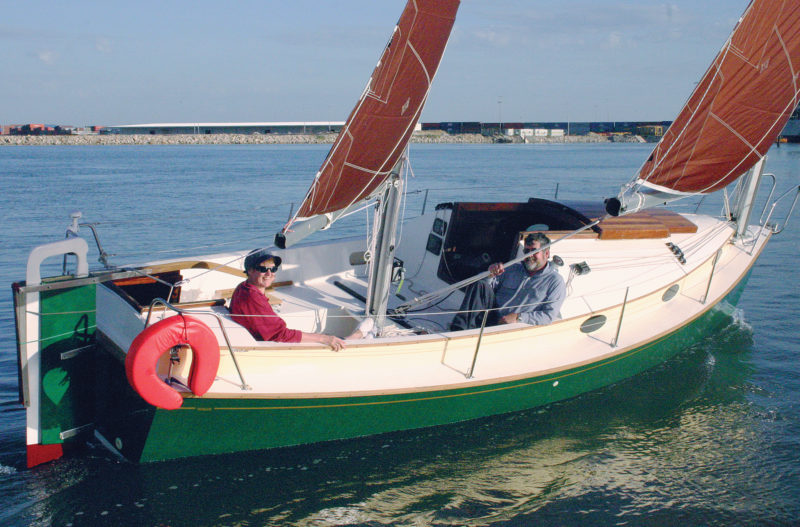 Photo by NIS Boats
Photo by NIS Boats
Join The Conversation
We welcome your comments about this article. If you’d like to include a photo or a video with your comment, please email the file or link.
Comments (7)
Leave a Reply
Stay On Course

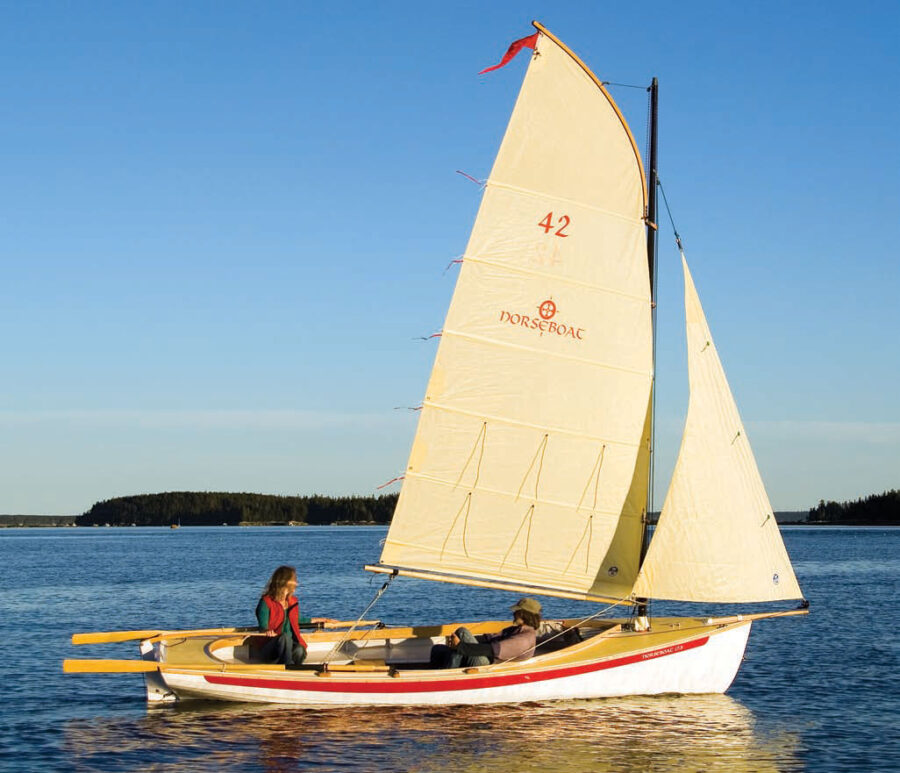
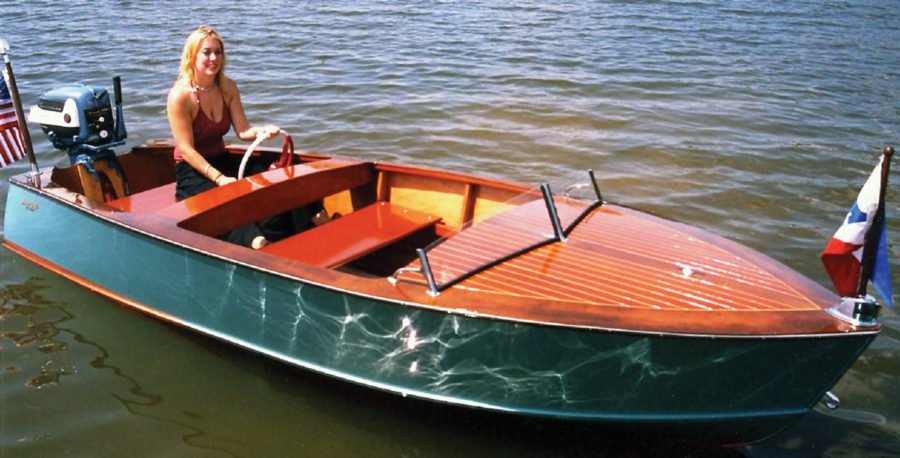
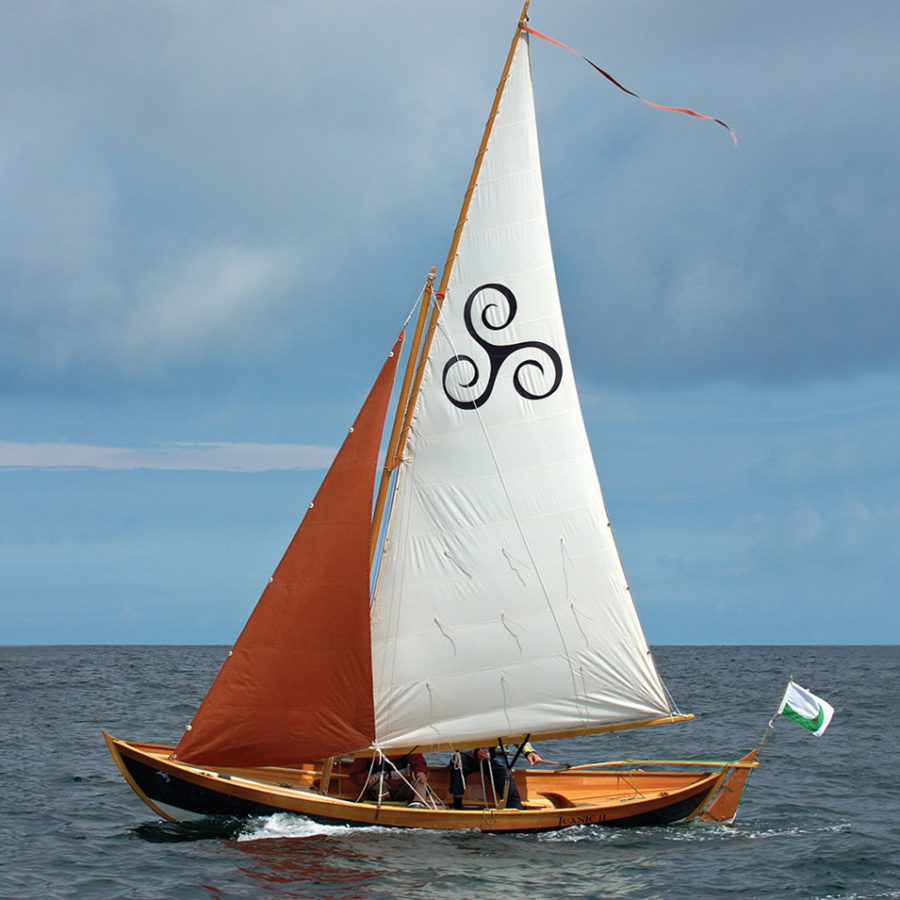
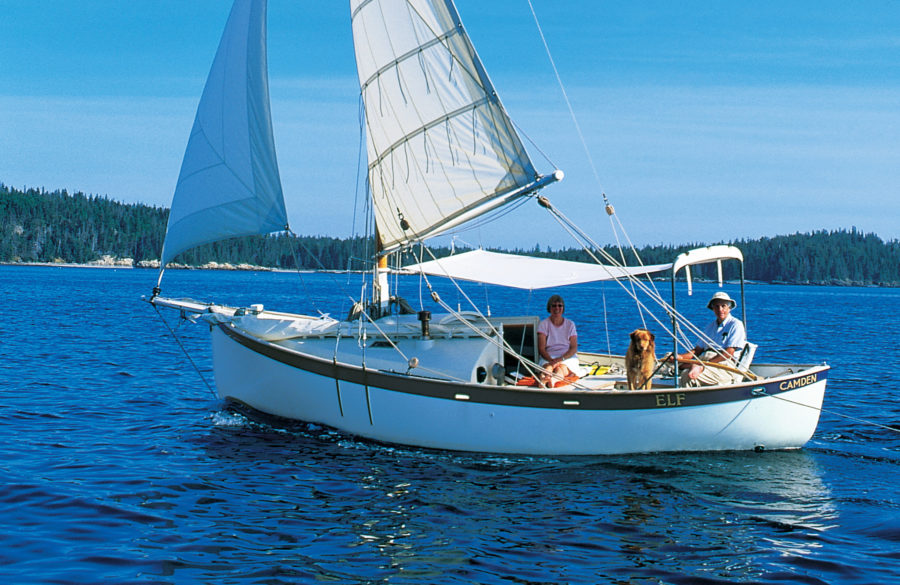
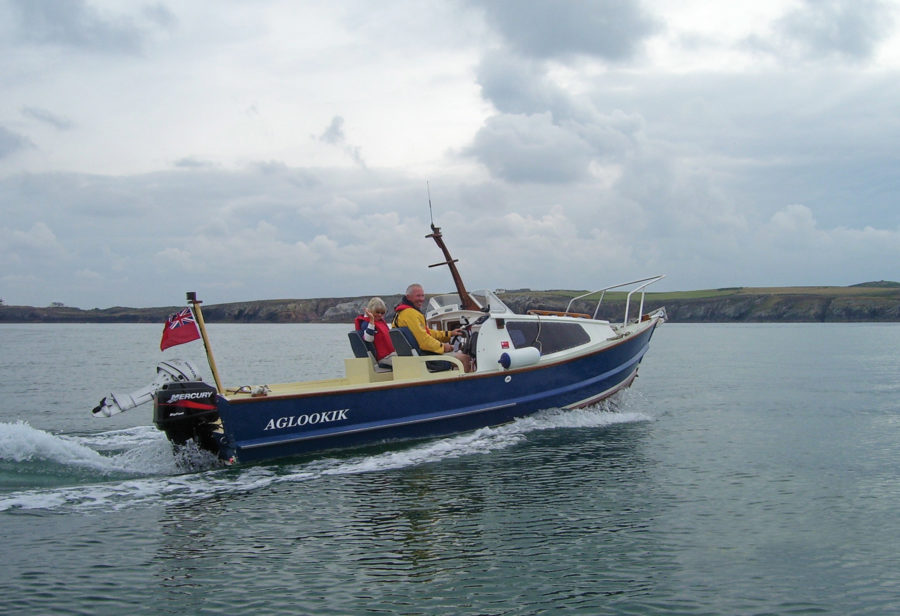
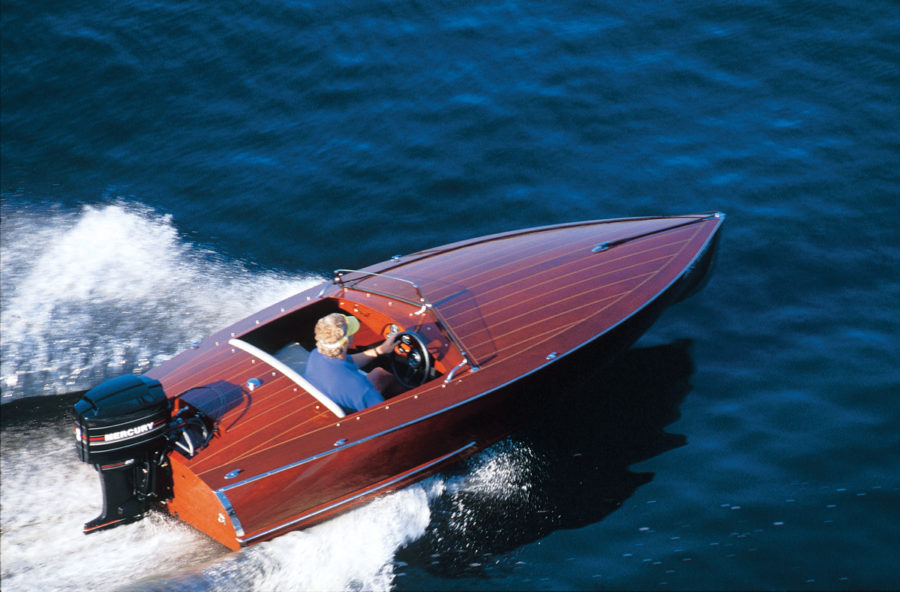
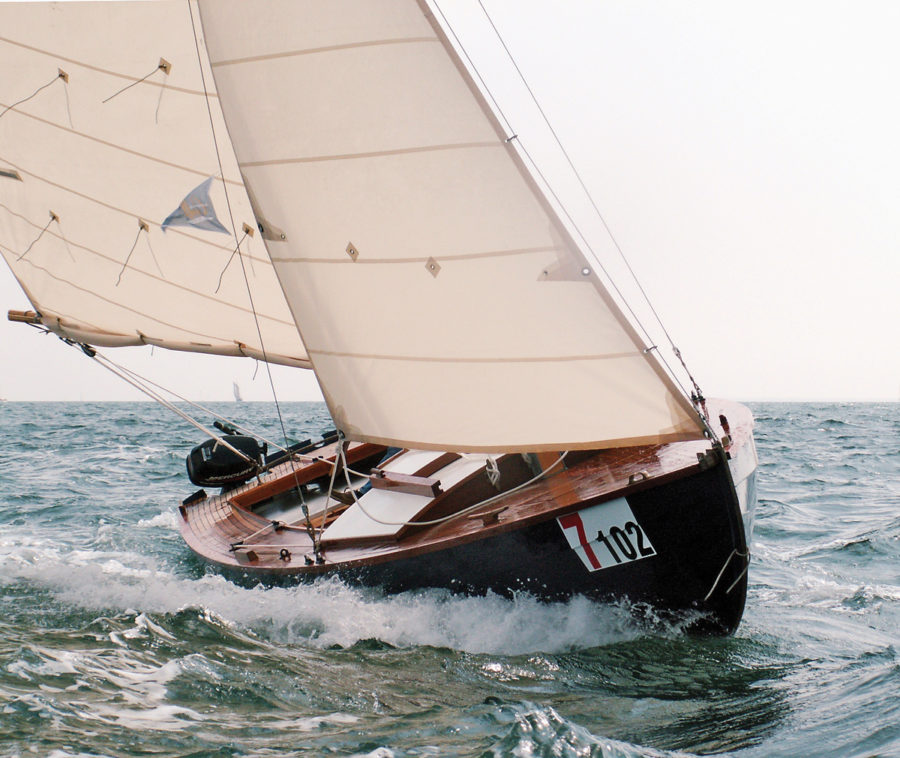
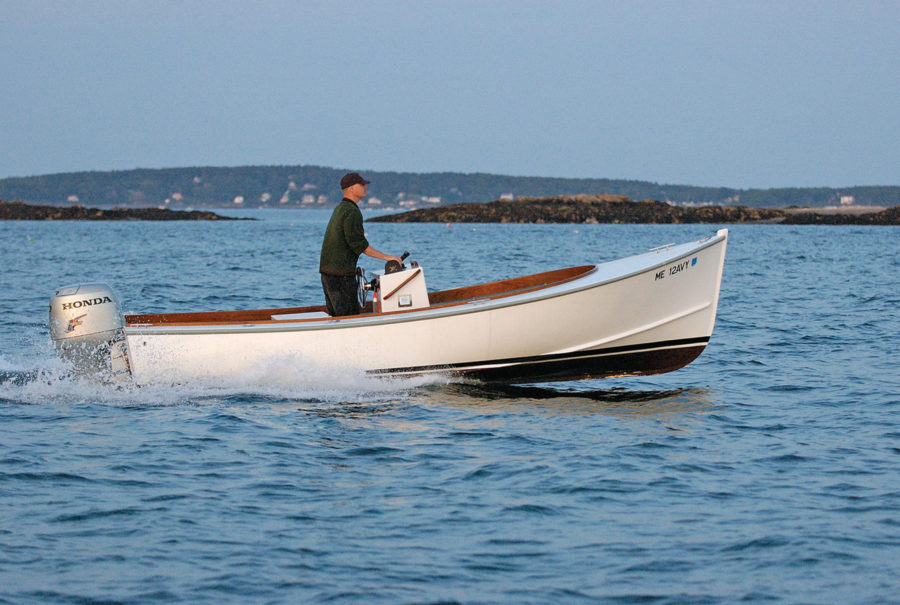
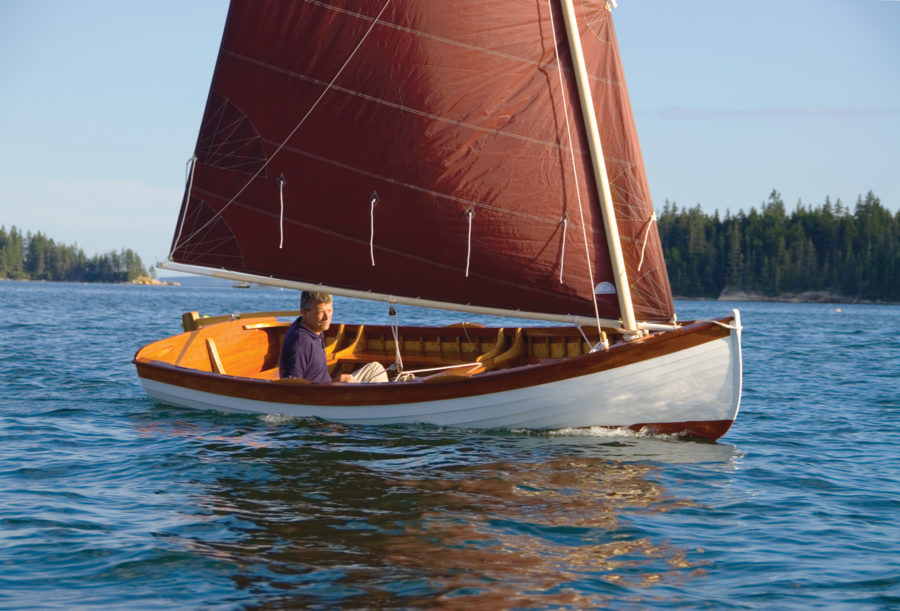
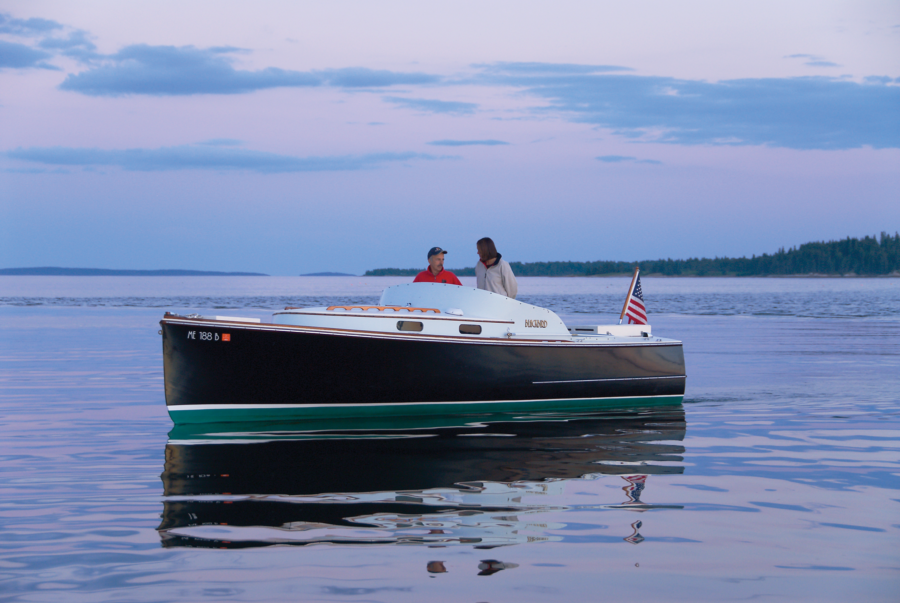
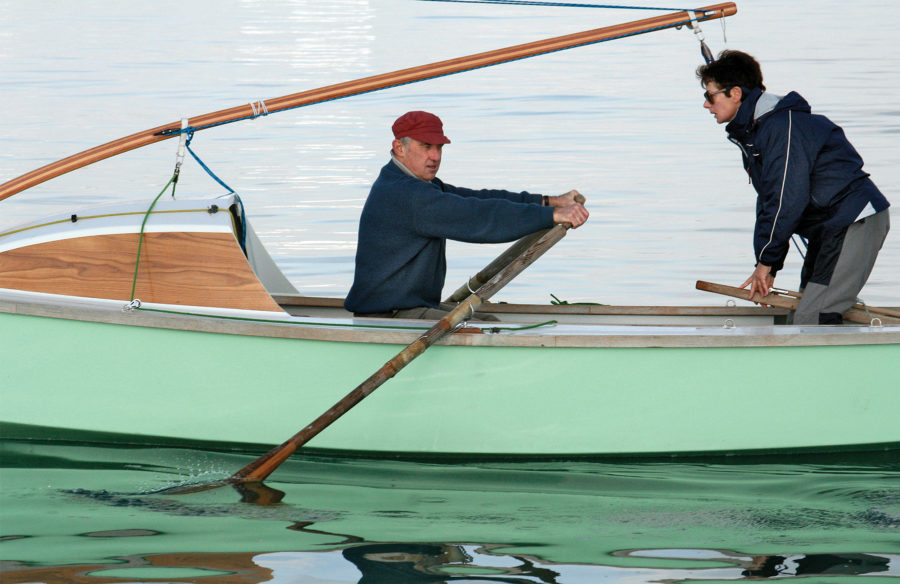
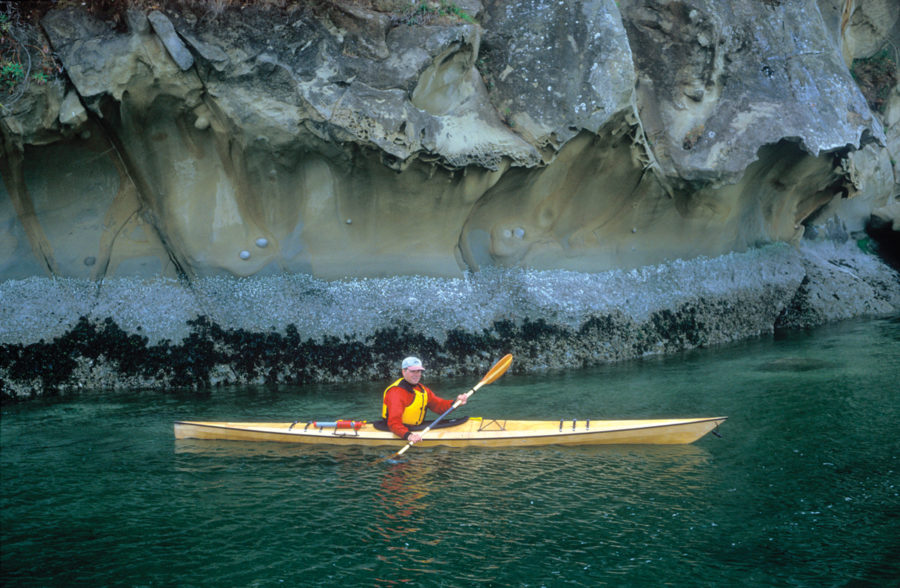
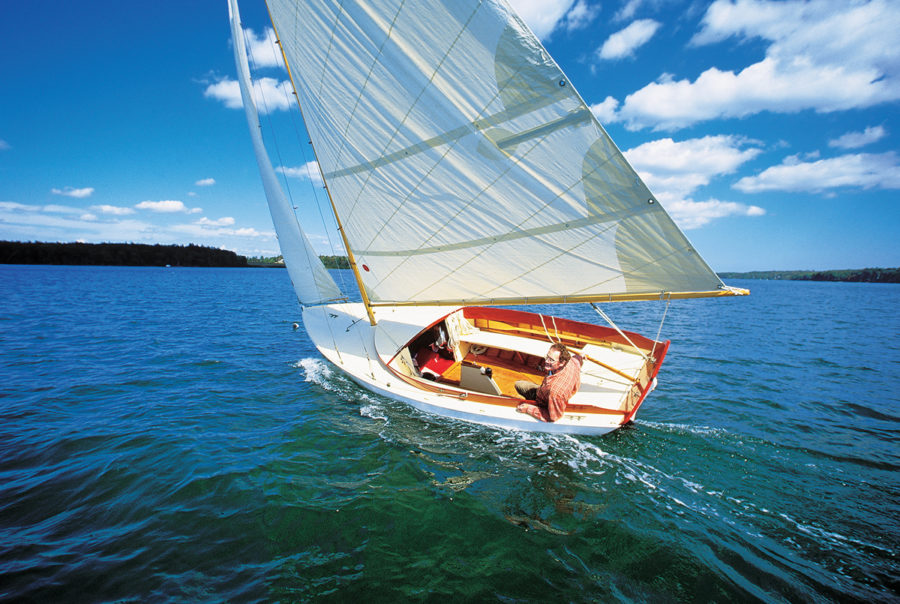
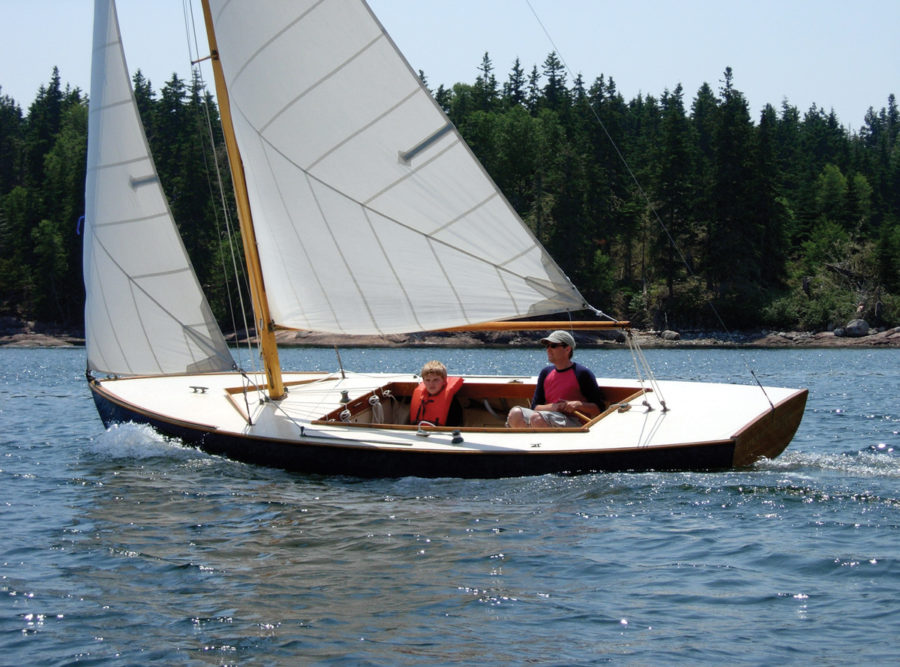
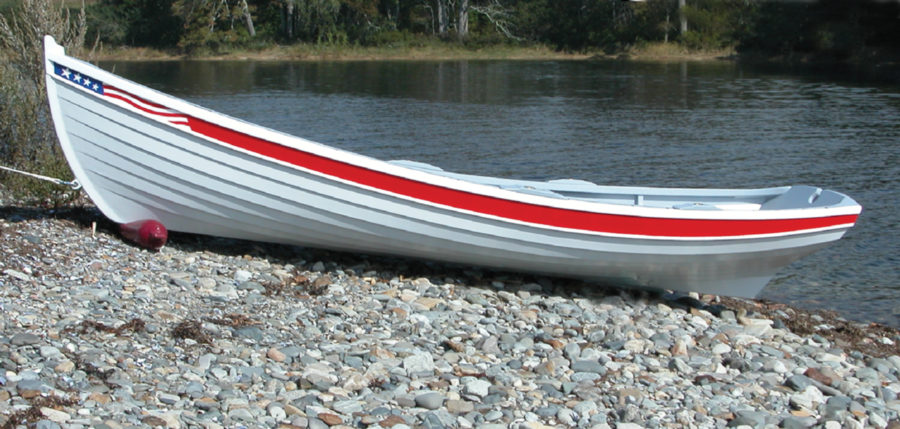
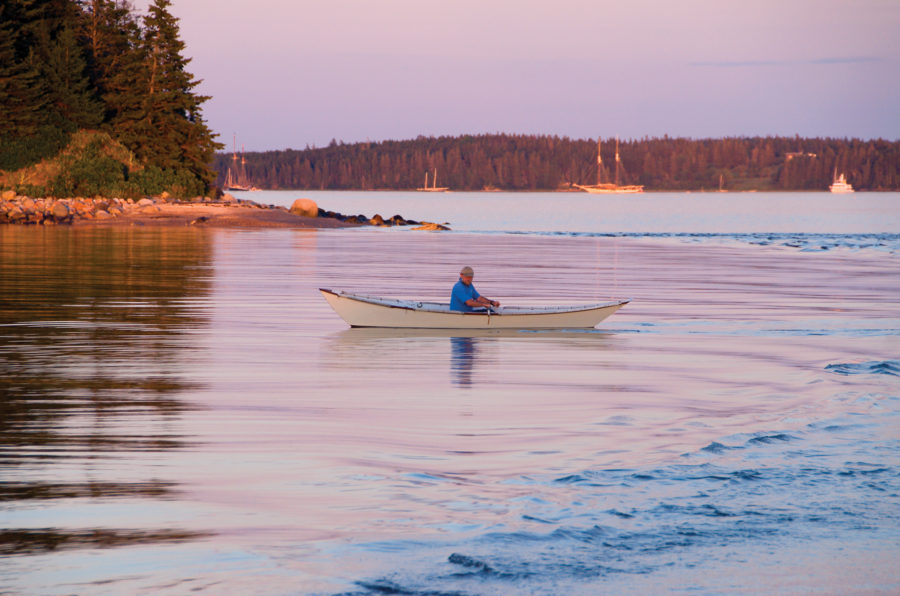
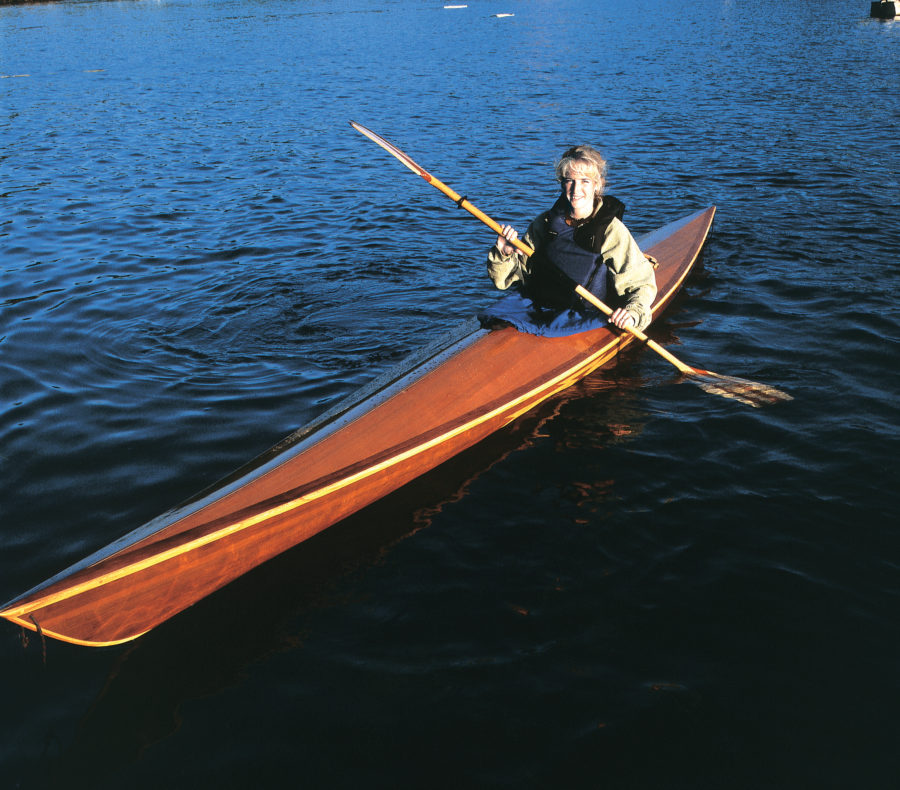
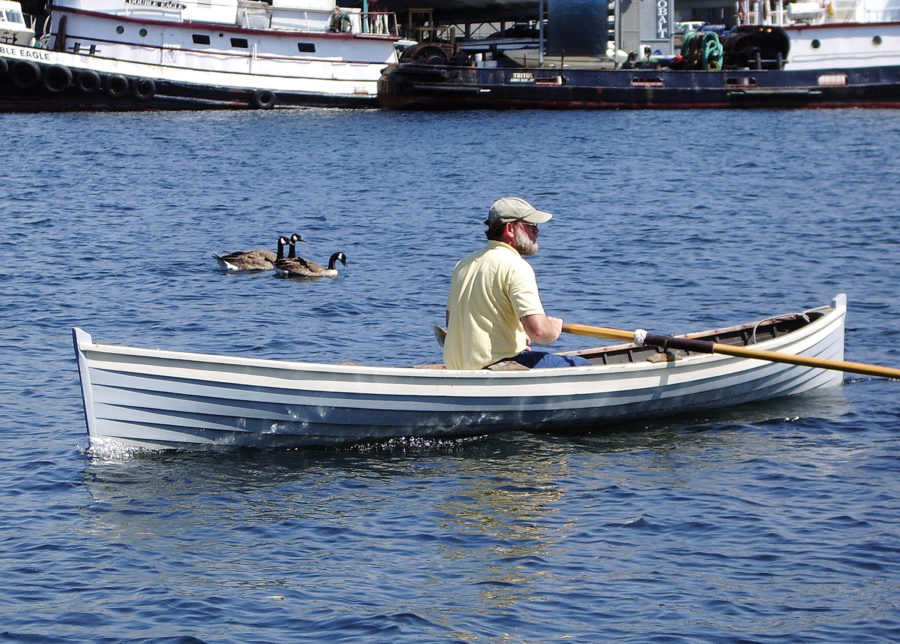
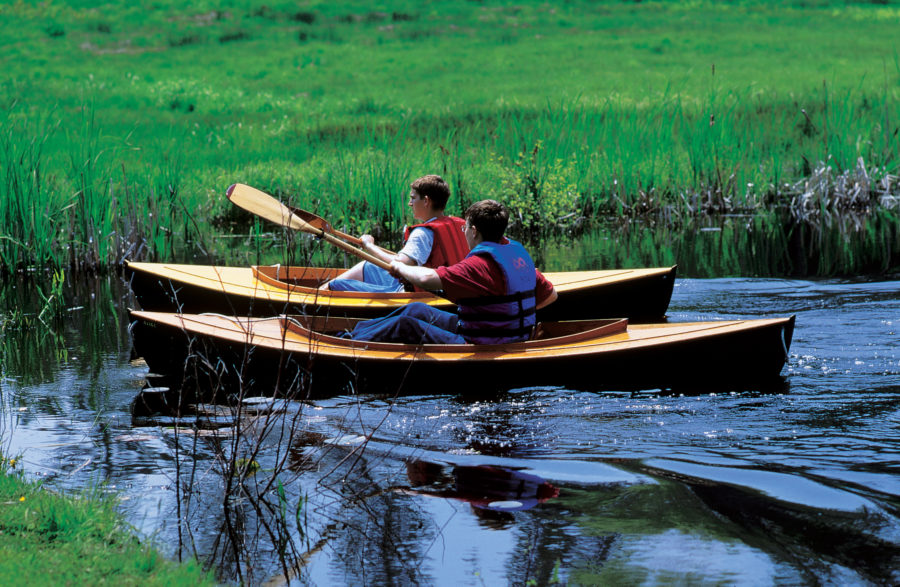
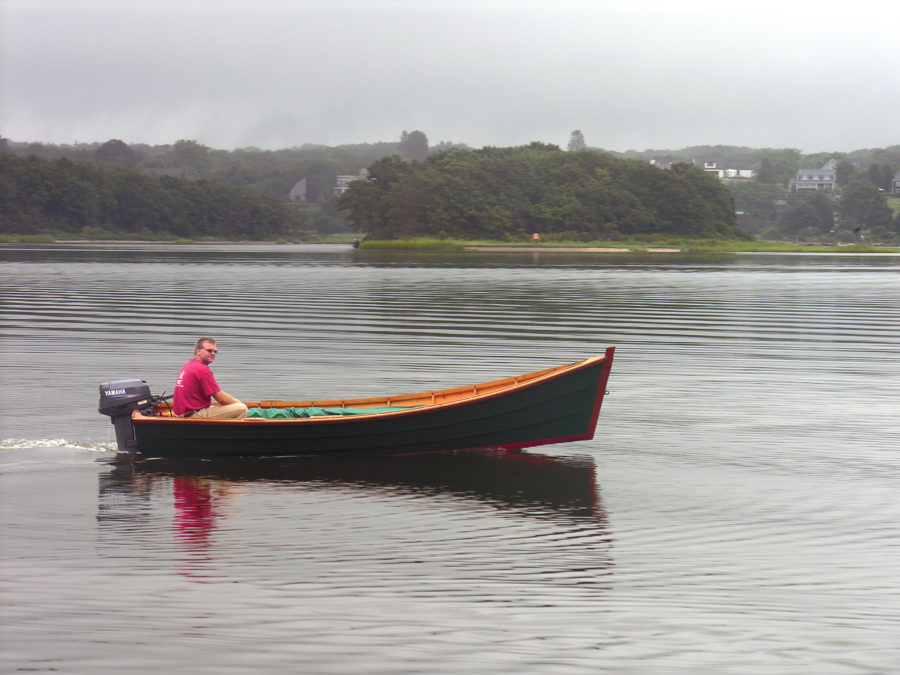
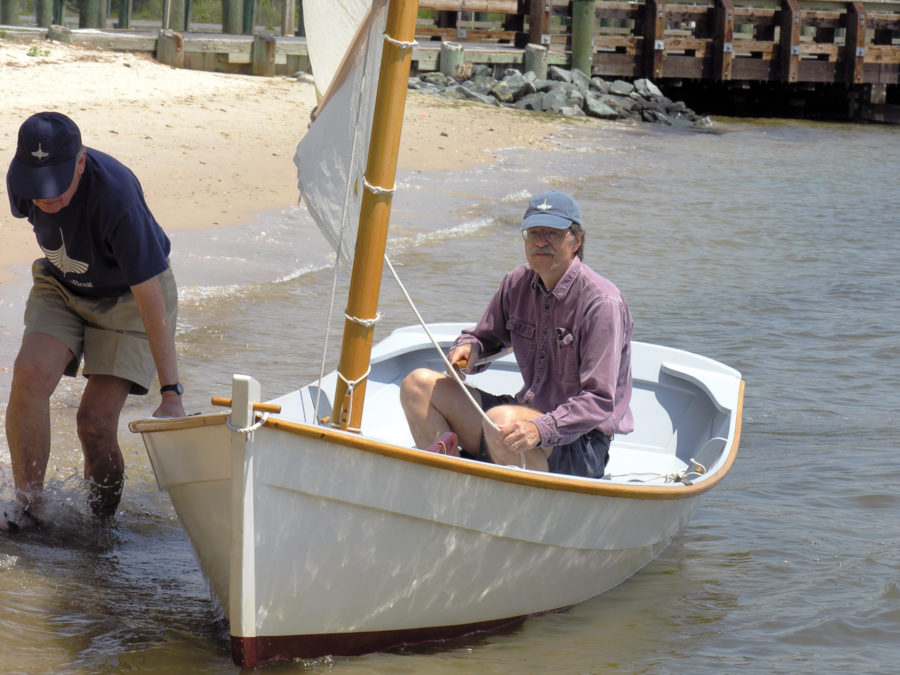
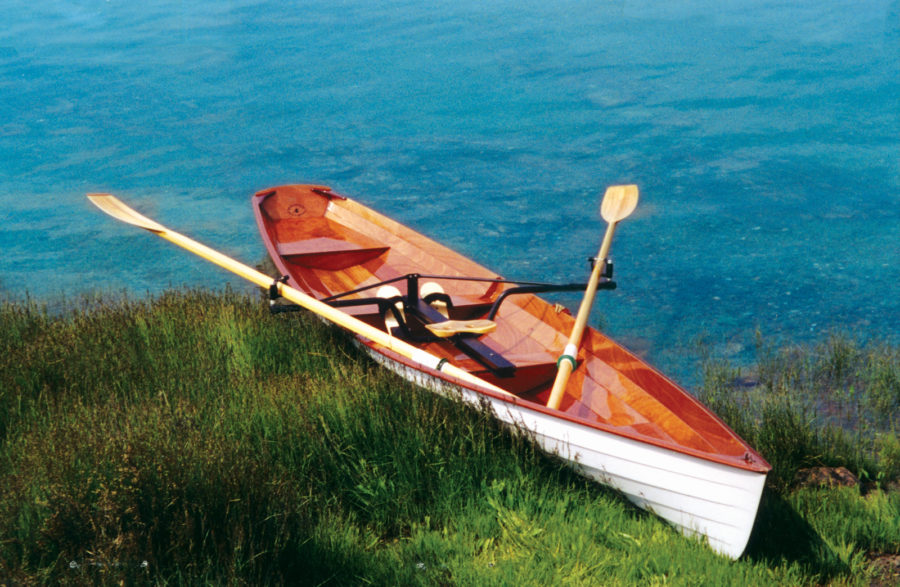
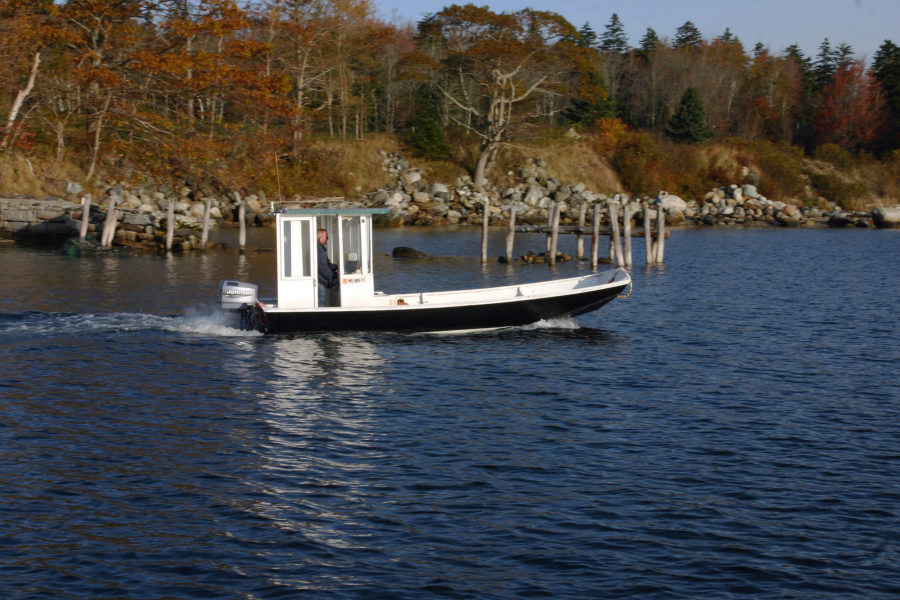
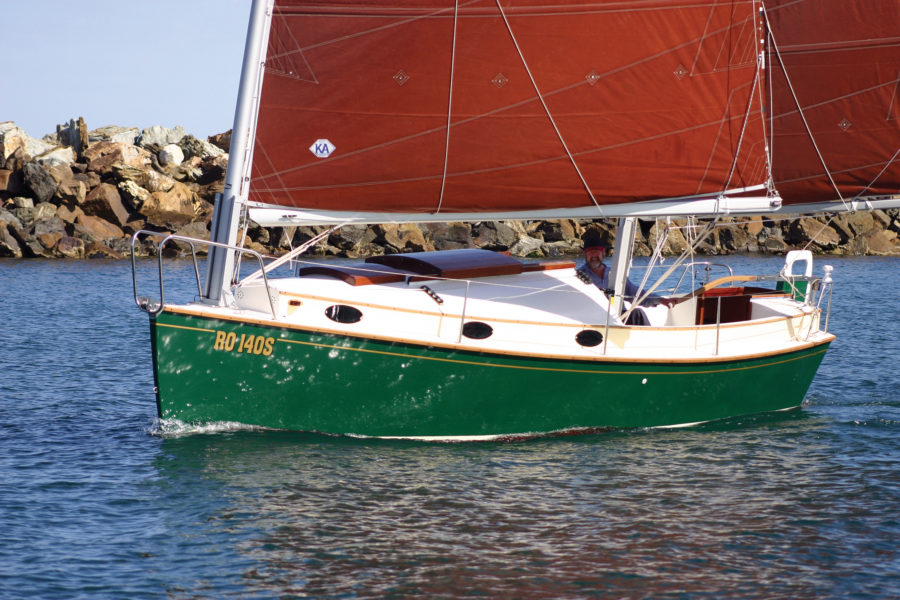
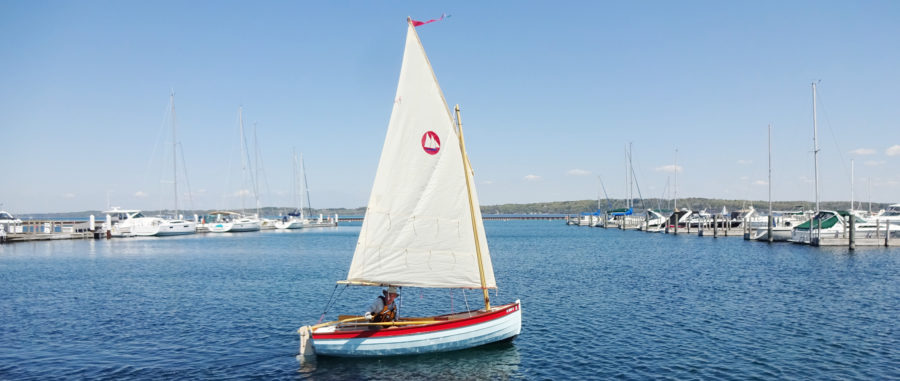

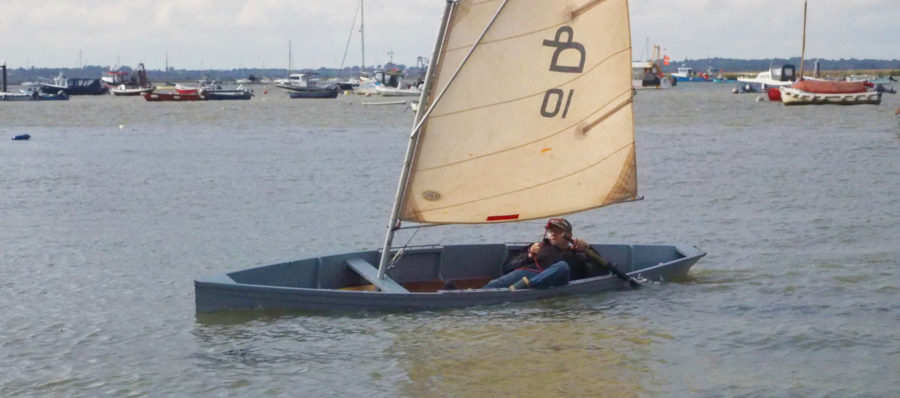

I have a friend who built one early on and he enjoyed the boat for several years until moving forced sale of the boat. I’m forwarding this email to him as I suspect he still has fond memories of his NIS. Is there any more information available as he is now suffering from Parkinson’s?
Thanks,
Paul
Hi Paul, I’m one of the moderators for a Norwalk Islands Sharpies group on Facebook. Members of the group are mainly builders and owners of these wonderful craft plus a number of people who are just keen admirers. You and your friend would be most welcome to join. I also have quite a lot of information, photos, etc. as well as details of who owns which boats. Feel free to email me at [email protected] if you have any queries.
Cheers,
Pete
I had one (26) and my only comment is have a sail on one before you commit.
They are not as straightforward as some other boats. Bruce Kirby’s name is always mentioned but anyone who has raced a Laser will understand what it is like to hit the bottom mark in a strong wind. They are tippy. So are the NIS. They bob around and caper at times. You need to be well ahead of them in a bit of wind mentally. Not as simple as a sloop-rigged yawl for instance. Just saying. They are also a big boat. You need to be pretty athletic at times. I was younger then too. I think the B and B yachts equivalent with a bit of chine would be something to look at. Will probably get shouted at here but that was my experience.
Looking backward at the experience I reckon the 23 would be a better experience.
I am not trying to stir up trouble, just reporting.
Rob
Hi Rob,
I appreciate your comments as a former NIS 26 owner (remember you were previously a member of the NIS Yahoo group?), but I’d suggest the Laser – NIS comparison is not relevant.
Similarities between the laser dinghy and the NIS – freestanding rig, quick and simple to rig, shallow draft with centreboard, designer.
Differences between the laser dinghy and the NIS:
Laser
– is a cartoppable high performance dinghy weighing around 60kg with rounded chine, designed for racing and has no ballast, relies on crew actively hiking to keep it upright, can capsize relatively easily and needs to be righted by having the crew stand on the centreboard. Crew sits “on” the boat more than in it due to small footwell, so no protection from wind and waves. Cannot self-steer due to lack of balance of rig.
NIS
– is a trailerable (in case of 18′-29′ versions) yacht with hard chines, very robust, weighing around 8-900kg in the case of the 18′, and maybe 2000kg in the case of the 26′, designed primarily for cruising, has at least 250-300kg (18′) and perhaps 600kg (in case of the 26′) of ballast attached to the bottom and a barely ballasted centreboard. So NISs are definitely not rock solid like a yacht with a fixed keel, and particularly in the smaller sized 18 and 23, the crew-weight is a higher proportion of the boat’s total weight, so does have an impact on balance, but in the unlikely event that they ever capsize they are nevertheless entirely self-righting (Kirby arranged some testing which gave a theoretical self-righting from over 100deg). The NIS is initially “tippy” likely due to its relatively narrow waterline beam, but thereafter is very solid and resists further heeling due to the ballast and to the flared topsides. The NISs are incredibly dry boats to sail, with high freeboard, protective coaming around the cockpit, high crowned cabin top, plus a self-draining cockpit. Also, when well set up with controls all lead to the cockpit, there is rarely a need for the crew to move forward. I agree that sailing the NIS with the freestanding cat ketch rig is definitely different from sailing a traditionally stayed-rig sloop, but I would suggest that what is different is that they are so easy and foolproof to sail, with only two sheets – mizzen and main – to worry about, rather than having to tack a foresail, and they are often so well-balanced with the wind ahead of the beam that they steer themselves. So perhaps they are not “straightforward” in the sense that someone used to sailing a traditionally rigged boat might take a short time to get used to it. One NIS 26 owner had a wonderful analogy – saying that his NIS was like sailing an “automatic” – meaning there was little that the crew has to do.
My comments are based on over 10 years of familiarity with the NIS, including talking with many owners over those years, and having sailed on six NIS 18s, six NIS 23s, two NIS 26s, and one NIS 29, including in coastal sailing in Bass Strait. At no time did I feel unsafe sailing any of these boats.
I thank you for featuring my Boat in your article on NIS 26, the green one RO140S. I did not have the pleasure of building Little Jimmy, I have owned the boat now for seven year in that time I have renamed and repainted in black.
THE PEARL is the new name it’s a great boat for me because I am a novice to sailing and I can single hand sail her with no problem. As you see you they are a great vessel for shallow waters can pull up on any beach and just step off. I find The Norwalk Island Sharpie’s are an eye-catching craft and mine turns head where ever I sail and comes with onlookers, asking a lot of questions. Due to the COVID-19 restriction I haven’t been able to sail for a while. I’ll try and get the boat in the next Wooden Boat Festival in Hobart Tasmania.
The top picture was taken at Matilda Bay Perth Western Australia.
Kind Regards,
Colin Wright
Hi Colin – I’m thinking about buying one of these boats. How have you found it’s stability in the open ocean? How would it handle coastal sailing on the Aus East Coast for example?
They go pretty well according to Robert Ayliffe! He sailed his 23 across the Bass Strait.